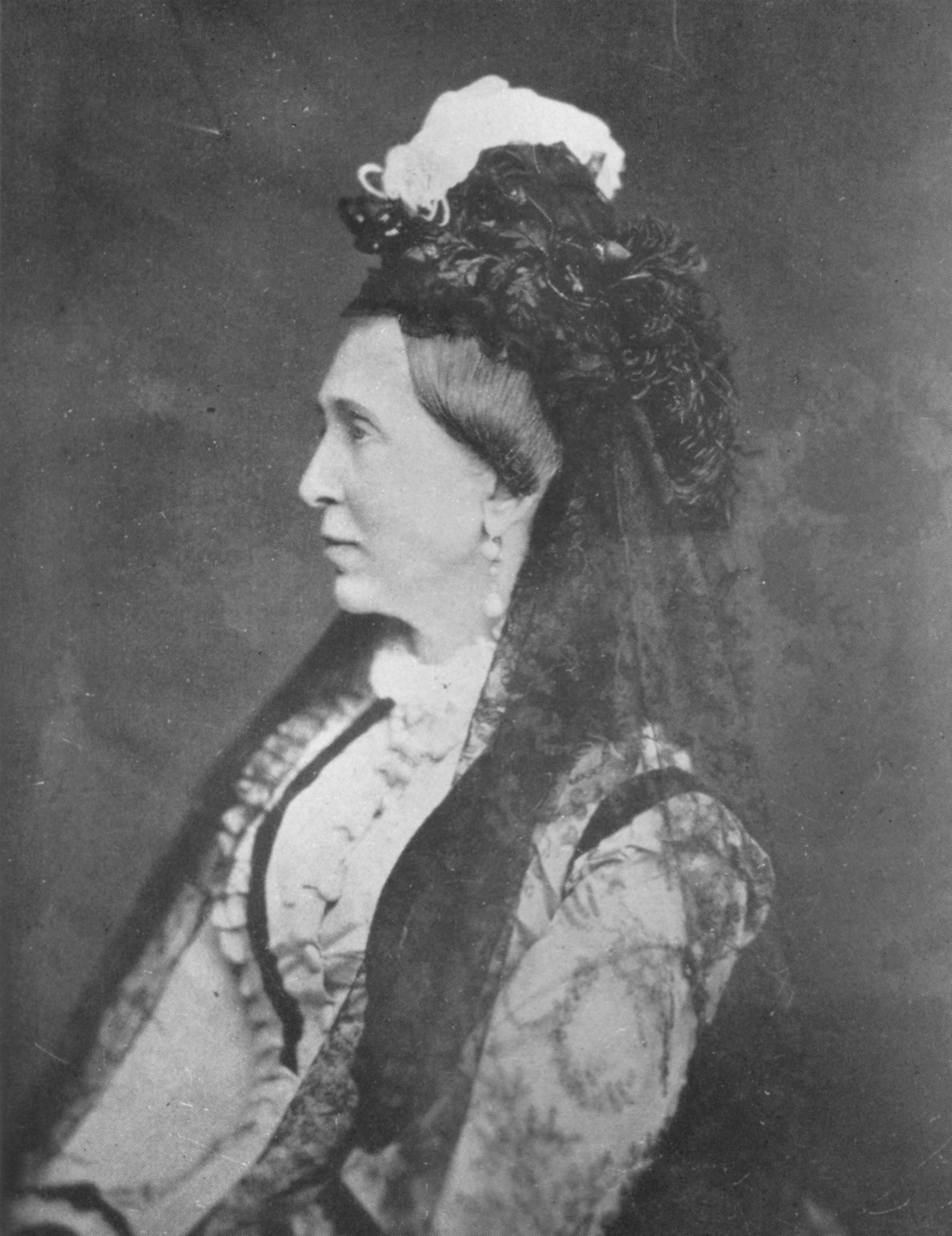- Josephine of Leuchtenberg
Infobox Swedish Royalty|majesty|consort
name =Josephine of Leuchtenberg
full name =Joséphine Maximiliane Eugénie Napoléonne
title =Queen consort of Sweden and Norway

caption =Dowager Queen Josefina - photograph taken in 1874
reign =March 8 ,1844 -July 8 ,1859
spouse =Oscar I
issue =Charles XVPrince Gustaf, Duke of Uppland
Oscar IIPrincess Eugenie of Sweden Prince August, Duke of Dalarna
royal house =House of Bernadotte House of Beauharnais
othertitles ="HM" Queen Josefina
"HM" The Queen
"HRH" The Crown Princess of Sweden & Norway
"HSH" Duchess Josephine of Leuchtenberg
father =Eugène de Beauharnais
mother =Princess Augusta of Bavaria
date of birth =birth date|1807|3|14|mf=y
place of birth =Milan
date of death =death date and age|1876|6|7|1807|3|14|mf=y
place of death =Stockholm
place of burial =Riddarholmen Church |Joséphine of Leuchtenberg (
14 March ,1807 -7 June ,1876 ) was theQueen consort ofOscar I of Sweden andNorway . She was known as Queen Josefina.Background
Born in
Milan ,Italy , she was a daughter ofEugène de Beauharnais , the first Duke of Leuchtenberg, and his wife,Princess Augusta of Bavaria . Her paternal grandmother and namesake was Joséphine Tascher de La Pagerie, the first wife of Emperor Napoléon I of France.At birth she was given the title Princess of
Bologna by Napoléon, and later she was also made Duchess ofGalliera .Princess Joséphine married Oscar I at the Leuchtenberg Palace in
Munich onMay 22 ,1823 . They also conducted a wedding ceremony onJune 19 inStockholm . Through her mother (her maternal line of Hesse and upward through Hanau and Ansbach, Baden-Durlach and Kleeburg), Joséphine was a descendant ofGustav I of Sweden andCharles IX of Sweden , thus also making her children descendants of Gustav Vasa, etc. Through her paternal grandfather, she was also one of the descendants ofRenata of Lorraine , granddaughter ofChristian II of Denmark .Crown Princess
Six days after her arrival in Sweden, her middle name Napoléonne was removed. This was because Sweden had fought against Bonaparte in the recent war. She had brought with her several pieces of exclusive jewellery made in Paris for her paternal grandmother, which are still among the possessions of the Royal Houses of Sweden and Norway (via Queen Louise of Denmark, née Princess of Sweden and Norway and also via Crown Princess Märtha of Norway, née Princess of Sweden and Norway).
Joséphine was interested in gardening, enjoyed painting, and was involved in charity and reforms in Sweden. Her interest in art was active and genuine; she greatly supported the career of the painter
Sofia Adlersparre (1808-1862), tried to do the same for the sculptorHelena Isenberg , (who was, however, too independent to accept help from anyone) and also encouraged the artistical interest and talent of her own daughter, Princess Eugénie, who became a talented amateur-artist.In 1824, the crown prince-couple visited Norway and stayed in
Oslo , were they engaged in much representation to make the monarchy popular.Although she was a devoted Catholic, she agreed to raise her children Lutheran. Oscar and Josephine had five children, of which two were to become kings of Sweden and Norway.
Her marriage was at the beginning a happy one, unusually so for a royal match, and her husband's unfaithfulness was successfully hidden from her. After she discovered it, however, she was deeply wounded and never really felt happy again; she wrote in her diary of her bitterness that a woman was expected to endure a husband's unfaithfulness. Her husband's affair with the famed actress
Emilie Högquist was well known.Queen
"Josefina", as she was called in Sweden, was very popular both within the court and with the public from the moment she arrived as crown-princess, and she was more popular as queen than both her predecessor and her successor. She was a success both socially and as a queen consort, and though she remained a devout Catholic, this did not lessen her popularity.
It is discussed whether she had any political influence during her husband and her son's reign, and it is very possible that she did, though it is unknown to what amount. She was pointed out to have acted as her husband's advisor and for having exerted large influence in several matters; in 1848, she tried to prevent the
First Schleswig War , in 1855, she was rumored to be responsible for the treaty betweenSweden ,Norway ,France andGreat Britain , and in 1860, she was, according to the rumors, the active force between the new law of freedom of religion; the old version of this law allowed different religious beliefs only if you were born in it; it did not allow for conversion from theLutheran Faith.Josephine died at the age of sixty-nine and received a Catholic burial. Her last words were "I am going home now. I am very happy."
Family and issue
Her children were:
# King Charles XV (Charles IV in Norway) (1826-1872)
# Prince Gustaf, Duke ofUppland (1827-1852)
# King Oscar II (1829-1907)
# Princess Eugenie (1830-1889)
# Prince August, Duke ofDalarna (1831-1873)Ancestry
ahnentafel-compact4
style=font-size: 90%; line-height: 110%;
border=1
boxstyle=padding-top: 0; padding-bottom: 0;
boxstyle_1=background-color: #fcc;
boxstyle_2=background-color: #fb9;
boxstyle_3=background-color: #ffc;
boxstyle_4=background-color: #bfc;
1= Josephine of Leuchtenberg
2= Eugène de Beauharnais, 1st Duke of Leuchtenberg
3=Princess Amalia Augusta of Bavaria
4=Alexandre, vicomte de Beauharnais
5=Joséphine Tascher de La Pagerie
6=King Maximilian I of Bavaria
7=Princess Augusta Wilhelmine of Hesse-Darmstadt
8= François de Beauharnais, marquis de la Ferté-Beauharnais
9= Marie Henriette Pyvart de Chastullé
10= Joseph-Gaspard de Tascher
11= Rose-Claire des Vergers de Sanois
12=Count Palatine Frederick Michael of Zweibrücken
13=Countess Palatine Maria Franziska of Sulzbach
14=Landgrave George William of Hesse-Darmstadt
15= Countess Luise of Leiningen-DagsburgReferences
* Herman Lindqvist (2006). Historien om alla Sveriges drottningar (in Swedish). Norstedts Förlag. ISBN 9113015249.
Succession
Wikimedia Foundation. 2010.
